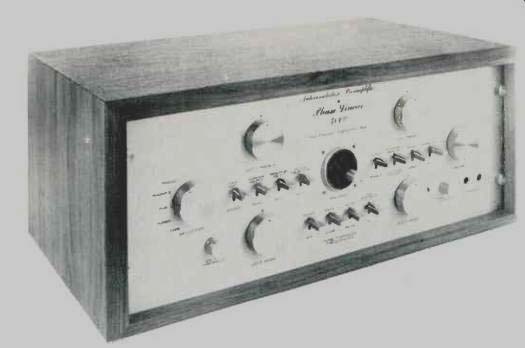
MANUFACTURER'S SPECIFICATIONS
Frequency Response: Phono, within ±1 dB of RIAA from 20 Hz to 20 kHz; High Level, within ±1 dB from 20 Hz to 20 kHz.
Gain: Phono, 65 dB; High Level, 15 dB.
Input Impedance: Phono, 47 kOhms from 20 Hz to 20 kHz; High Level, 50 kOhms.
Noise Level: Phono, 82 dB below full output; High Level, 95 dB below full output.
Output voltage: Full output 8 volts rms; better than 2.0 volts into 4.7 kOhm or greater.
Total Harmonic Distortion: Less than 0.25%; typically 0.02%.
Tone Control Range: Bass, ±8 dB at 20 Hz (selectable hinge points at 40 or 150 Hz); Treble: ±8 dB at 20 kHz (selectable hinge points at 2 and 8 kHz).
Active Equalizer Response: 6 dB/octave boost below 50 Hz.
Peak Unlimiter Attack Time: 0.5 dB/microsecond for 6 dB peak unlimit action.
Downward Expansion: Begins at -35 dB to -41 dB limit.
Autocorrelator Noise Reduction Action: High Frequency, begins at 2 kHz (for 3-dB noise reduction), reaching 10 dB noise reduction from 4kHz to 20 kHz; Low Frequency, begins at 200 Hz, reaches 20 dB at 20 Hz.
Sub-Sonic Filter Rejection: -35 dB at 5 Hz.
General Specifications
Power Switching Capability: Up to 25 amperes for associated equipment.
Power Consumption: (Preamplifier only) 40 watts.
Dimensions: 19 in. W x 7 in. H x 10 in. D (including cabinet).
Weight: 18 pounds.
Price: $599.00; cabinet, $37.00.
There are two schools of thought when it comes to preamplifiers. There are those who believe that a preamplifier should simply amplify and do nothing else to the program signals applied to it. Purists who take this position often forget that, at the very least, a preamplifier had better impart anything but flat response to the signals applied to its phono inputs from a magnetic cartridge-else one would hear reproduction devoid of all bass response and with screaming highs (thanks to the RIAA recording curve). Some purists concede that moderate-acting tone controls are a necessary evil, but should generally be bypassed by a defeat switch in the interest of "true high fidelity." Then there are those audiophiles who believe that anything that can be done in the design of a preamp to improve S/N ratios (even response-destroying high- and low-cut filters), expand dynamic range (which has been compressed in the medium, be it FM radio or phonograph discs) or even subtly fill in that octave or so that loudspeakers generally ignore, is well worth the effort. I confess that I was somewhat of a purist-up until recently. Such niceties as Dolby, dbx, ANRS (as used in CD-4 recording to reduce noise), Burwen, and now, the Phase Linear 4000 Autocorrelator Preamplifier helped change my mind.
The moment this large, impressive preamp comes out of the carton you know that you're not dealing with just another preamplifier. Its circuitry and features are, in fact, more sophisticated than those of any other preamplifier we have ever tested.
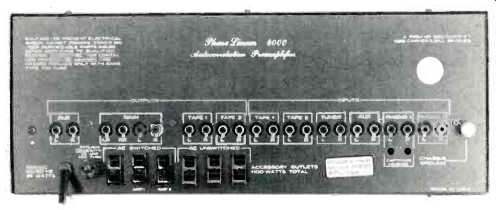
Fig. 1--Rear panel of the 4000 preamplifier.

Fig. 2--Internal view.
The massive looking front panel sports the now familiar joystick balance control located right in its center. Why a joystick balance control? Simply because the Phase Linear 4000 is a sort of hybrid 4-channel device that incorporates an SQ decoder circuit with front-back logic and therefore has four outputs. This, however, is its only 4-channel attribute, since all high level inputs and other outputs are strictly intended for stereo use. For example, the four massive tone controls symmetrically positioned about the panel are for individual control of bass and treble, of left and right channels. The other two large metal-turned knobs are for program selection (at the left) and master volume control (at the right). Of the four elegant and easy-to-finger toggle controls below the joystick, one turns on power to the unit, while the remaining three select turnover points for the bass control (150 Hz or 40 Hz) and treble control (2 kHz and 8 kHz) and permit total bypassing of the tone controls altogether (for the benefit of those purists). Nestled between the left bass and treble controls are four more lever switches. Two of these are involved in the tape monitoring functions and permit monitoring of Tape 1, Tape 2 or copying of tape to tape while listening to yet another program source.
The third lever in this area activates what Phase Linear calls an Active Equalizer, which adds a slight amount of boost at the extreme low and high ends of the audio spectrum. This feature is not to be confused with a so-called loudness control, since the degree of boost is fixed regardless of volume settings.
The fourth lever in this area introduced one of the unique circuits incorporated in the Phase Linear 4000. It is called a Peak Unlimiter and Downward Expander. When activated, it introduces a sophisticated volume expansion system that actually provides different degrees of expansion depending upon instantaneous program levels. The threshold level of the expansion system can be varied by means of a small control knob below and to the right of the selector knob and when the circuit is working properly, an adjacent LED indicator flashes on peak signals. But wait! The best feature of all is yet to come. The four additional lever switches located between the right channel bass and treble controls provide for stereo/mono switching, audio muting of about 20 dB, insertion of the 4-channel SQ logic decoder and Phase Lin ear's incredible "autocorrelator" circuit. The autocorrelator is a noise reduction scheme that is one-sided in its operation. That is, it does not require specially-encoded program sources (as do Dolby and dbx) to reduce random noise which it does by as much as 10 dB. A brief description of this amazing circuit is supplied by the manufacturer. As they explain it, signals in the 200 to 2000 Hz region are sensed to determine whether the signal content is discrete (or musical) as opposed to random, wide-band noise. Discrete or musical program content in this frequency region, when detected, causes "windows" to open up in the preamplifier's 2000 to 20,000 Hz response range at harmonics of the musical frequencies while the rest of that spectrum (where most objectionable noise is heard) is shut down, dynamically, excluding noise components not harmonically related to the program material. In actual use, the small correlation threshold knob, located to the right of the right bass control is rotated counterclockwise while listening to program material until the noise takes a noticeable drop. Musical highs are unaffected unless the control is turned considerably past that operating threshold. More about this unusual circuit and how it performed during our listening tests later on.
The rear panel of the 4000, shown in the photo of Fig. 1, contains the usual array of input and output jacks. One of the two phono input pairs is equipped with screwdriver-adjustable controls which help match cartridge characteristics to the input load of the preamplifier. Outputs include the 4-channel quartet, an auxiliary pair of stereo outputs, and outputs for the Tape 1 and Tape 2 monitor circuits. The auxiliary outputs are duplicated on the front panel in the form of phone jacks for feeding other amplifiers in your system.
The panel also contains six convenience a.c. outlets, three of them unswitched. The switched outlets are relay-controlled and can therefore handle more current (up to 25 amperes total) than if they were switched directly by the preamplifier's own on/off power switch.
An internal view of the Phase Linear 4000 is pictured in Fig. 2. All of the vertically-oriented, glass-epoxy circuit boards are well supported mechanically and further cushioned by plastic foam which adheres to the unit's cabinet wrap and applies cushioning pressure to the tops of the boards when the wrap is reinstalled. A good portion of the circuitry visible in the photo of Fig. 2 is devoted to the complex auto-correlator feature previously described. In fact, this circuit alone uses some twenty-odd transistors and about a hundred diodes.
Laboratory Measurements
Before attempting to measure performance of some of the "special" circuits of the Phase Linear 4000, we decided to test it first as a conventional preamplifier. Figure 3 plots tone control range for bass and treble controls when turnover frequencies are set to 150 Hz and 2 kHz and the range provided is similar to that of conventional tone controls. By switching to the 40 Hz and 8 kHz turnover points, it becomes possible to trim the extremes of the audio range without materially affecting mid-frequency response. Range of bass and treble controls in this mode is plotted in Fig. 4.
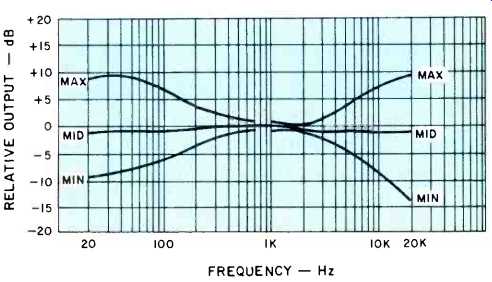
Fig. 3--Range of bass and treble controls, set at 150 Hz and 2kHz turnover
points, respectively.
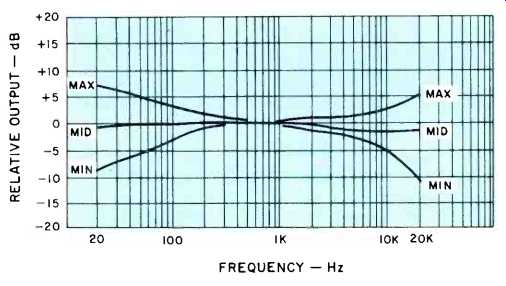
Fig. 4--Range of bass and treble controls, set at 40 Hz and 2 kHz turnover
points, respectively.
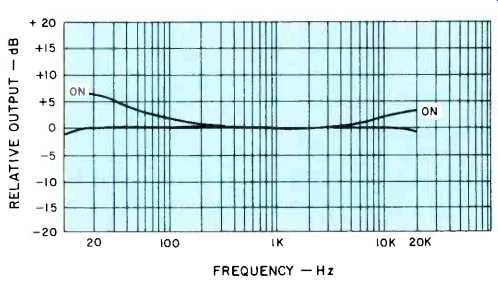
Fig. 5--Response of active equalizer.
Figure 5 shows response of the preamplifier when the Active Equalizer is turned on. As described by the manufacturer, this circuit simply adds a moderate amount of boost at the extreme low end (about 5 dB at 30 Hz) and even less boost at the extreme highs (2 dB at 10 kHz; 3 dB at 20 kHz), adding just a needed bit of life to woofers and tweeters that have given up at these frequencies.
Harmonic distortion was well under 0.1% for all output levels up to 3 volts (only 0.03% at a nominal 1 volt output level), while IM reached 0.25% at just over 3 volts output and hovered around the 0.1% mark at more typically-used output levels (1 volt and below). Results of these distortion measurements are plotted in Fig. 6.
The extremely low distortion of the 4000 is not limited to mid-frequencies. We measured THD at all audio frequencies for an output level of 1 volt and the results are shown in Fig. 7. Even at 10 kHz (where THD is rather academic, since the second harmonic will not be heard), THD was still a mere 0.06%. Other basic preamp performance measurements included phono input sensitivity of just over 2.0 millivolts for 1 volt output, high-level input gain of 10 dB, 180 mV input sensitivity for the high level inputs, and phono overload capability of 120 mV. Output overload occurred before any earlier stage distorted, at a level of about 8 volts out. Unweighted S/N in phono (referred to 10 mV input, 1 V out) measured 66 dB. When using the A-weighting network, the number improved to better than 75 dB. For the high level inputs, unweighted S/N measured 75 dB (referred to 1 V output) and increased to 87 dB with A weighting. RIAA equalization was accurate to within 0.5 dB at all frequencies from 30 Hz to 15000 Hz.
It was at once apparent to us that the Dynamic Peak Unlimiter and Downward Expander was a most worthwhile circuit, because it restored what sounded like about 8 to 10 dB of dynamic range to otherwise-compressed program material when it was switched into the circuit. Indirectly, this circuit also contributes toward improved signal-to-noise ratio, for if quiet passages are made quieter, and louder passages are made louder still, the net effect is that the low-level noise recedes further into the background. Since the circuit does operate dynamically, it was difficult to graphically depict its full effect. Nevertheless, recognizing the limitations imposed by static, sine-wave testing, we plotted input-versus-output for a particular threshold setting, and the results are shown in Fig. 8. Even under this static test, it is obvious that levels above the threshold are increased in intensity, while levels below the threshold (-15 dB in our graph) are further attenuated.
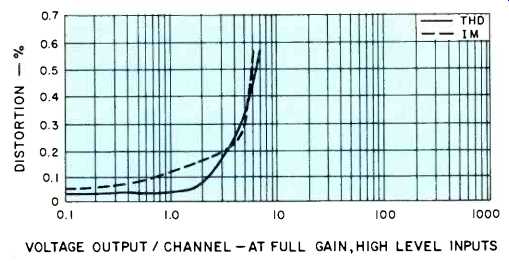
Fig. 6--Harmonic and IM distortion characteristics.
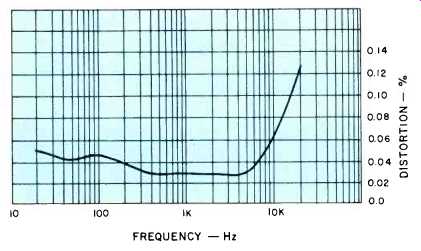
Fig. 7--THD versus frequency at 1 V output, 1 V input.
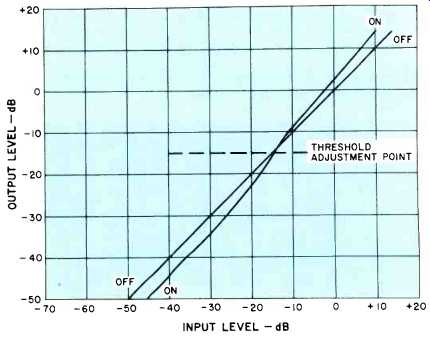
Fig. 8--Action of peak un-limiter circuit.

Fig. 9--Upper trace, weak-signal FM at tuner output (note ragged random
noise content); lower trace, same signal after processing through Autocorrelator
circuit.
The most exciting feature of the 4000 is the autocorrelator. One has to hear it in action to appreciate how well it is able to clean up noisy program sources. Properly adjusted, it worked just about as well as Dolby B noise reduction systems. However, it is used with ordinary material that already had noise content as part of the program-something that Dolby just cannot help. It worked well with old records and it even worked with weak-signal FM reception. We were most anxious to record its operation graphically, somehow, but were at first at a loss as to how to demonstrate the action statically. Finally, we resorted to our FM generator which we use in measuring tuners and receivers. We applied a weak signal to the antenna terminals of a tuner we had on hand.
Since we could regulate the FM program signal strength at will, we reduced signal strength until the output waveform (500 Hz) from the tuner was loaded with the raggedy kind of noise that is typical of weak-signal reception. This waveform was displayed on the upper trace of our dual-trace oscilloscope. Using a Y-connector from the tuner's outputs, we also connected the "received" signal to the tuner inputs of the Phase Linear 4000, and displayed its output as the lower trace on the 'scope. We activated the autocorrelator circuit, and adjusted its threshold to a point that did not attenuate a 10 kHz signal. There we had it, for all to see! The lower trace, adjusted to the same amplitude as the direct-from the-tuner audio, had visibly much less noise content than the untreated, recovered audio. While you have to examine the 'scope photo of Fig. 9 fairly closely to see the cleaner appearance of the lower waveform, audibly the difference is astounding.
I have only one criticism to level against the people at Phase Linear, and it's one they doubtless encountered before. Why oh why did they wait so long before bringing out the magnificent autocorrelator circuit as a separate add-on unit? What were those of us who had otherwise fine preamplifiers supposed to do, throw away our control units to take advantage of the noise reduction and peak-unlimiting features of the 4000? Well, it's all academic now since Phase Linear has introduced its Model 1000 with the autocorrelator and downward expander circuitry.
-Leonard Feldman
(Audio magazine, Nov. 1975)
Also see:
Phase Linear Model 2000 Preamplifier (Equip. Profile, Sept. 1976)
Phase Linear Model 3000, Series H Preamplifier (Jan. 1979)
Phase Linear 400 Amplifier (Feb. 1973)
Phase Linear DRS 900 Power Amplifier (Sept. 1983)
= = = =